Photographing Tree’s. By Ibraar Hussain
Dear Steve, I hope all’s well mate.
I’ve really been enjoying the reviews and submissions and thought I’d add something else into the mix.
Here’s a short article about photographing Tree’s. Tree’s are usually looked over, and ignored, they’re just, well, tree’s! they’re always to be found and I love photographing them. Yes, I am a bit of a Tree Hugger, am quite conscious and positive towards ‘green issues’, and a ‘born again Pagan’, (not really, I just like the sound of the last bit! )
Tree’s are very interesting and curious to photograph. they have a lot of character and charm. To look at and to study their shape, way of growth, form and texture is something which can be a very fulfilling task.
The best thing about them is that they’re (more or less) to be found everywhere, in cities, along avenues and pathways, gardens, parks, forests, plains, high mountains, moorland, deserts and even in and around offices and shopping mauls – concrete jungles!
[ad#Adsense Blog Sq Embed Image]
They’re also very interesting subjects on their own, collectively, or as part of a scene – urban or rural.
I like to mix it up bit and my pictures range from photographing a favourite tree at different times of the year with different mediums, (some folks have made some perfect examples of a tree during the year – blossoming in Spring, Fully laden in Summer, golden in Autumn and naked and bare in Winter – and of course covered with snow. Tom Mackie, a well-known landscape photographer has many examples, as does Joe Cornish and Charlie Waite in some of their books – superb stuff) to a shot of a scene where the line of tree’s make up the main subject.
I also like to capture fascinating or strange or historical tree’s such as The Druid oak in Burnham Beeches, or the major Oak in Sherwood Forest. I’m sure countries all over the world have their important landmark tree’s – and these can make interesting subjects.
Another idea would be to create a sort of abstract photograph combining certain elements from a tree – whether the branches as I am won’t to do, or the trunk – focussing on a specific aspect. Some people concentrate on the texture and look of the trunk – something which I think is very difficult to get ‘right’.
And Infra red – as this makes the leaves resemble snow! You can get some crazy results with this medium (whether film or digital).
And of course, tree’s can combine with the elements (both flora and fauna) in a landscape to make up the scene.
I also love to try to capture the play of light and shadow and the rays of the sun through branches when I am able to.
Anyway, here are some examples, and as for myself, I will be going out more as soon as the dire weather clears up, and will be having a look at interesting tree’s in the City. I’ve also just received my Polaroid SX-70 and a pack of Impossible Colour Shade Film – and I reckon tree’s will be amongst the things I’ll be photographing with it!
This is of one of my favourite tree’s in Epping Forest in Essex – just outside London. A lovely ancient forest which i enjoy walking in all year round.
it is an Oak, and a very attractive one at that, I just love the shape, the way the branches flow and extend upwards and outwards, and the curious shape of the trunk – the number 4 painted on it – well, I don’t know what that’s all about but I presume it’s an important tree and has been registered with the Corporation of London who own the Forest.
I photographed it with Tri X 400 (developed with ID11) with a GA645 Fujifilm camera.
–
And I also snapped it with the same camera and Fuji Velvia film.
–
This is a very interesting and dominant tree I came across in The Chitral Gol national park in the Hindu Kush. I love the way it fills outwards. (Fuji GA645, Fuji Velvia 50)
–
The Druid Oak, a 500 year old Oak in Burnham Beeches in Berkshire. (Contax G2, 21mm Biogon T* Kodak e100vs)
–
Line of trees in Osterley park – I love the form of the upper branches, the way the middle tree disrupts the shape, and the reflections. (Fuji F200EXR converted to BW, dodge/burn, Film Grain added)
–
The following line of tree’s is to be found near Turville in the Chiltern Hills. The Moon plus Red Kite add to some magic – i like this as it gives me the vibe of the place (Fuji GA645 Fuji Velvia 50)
–

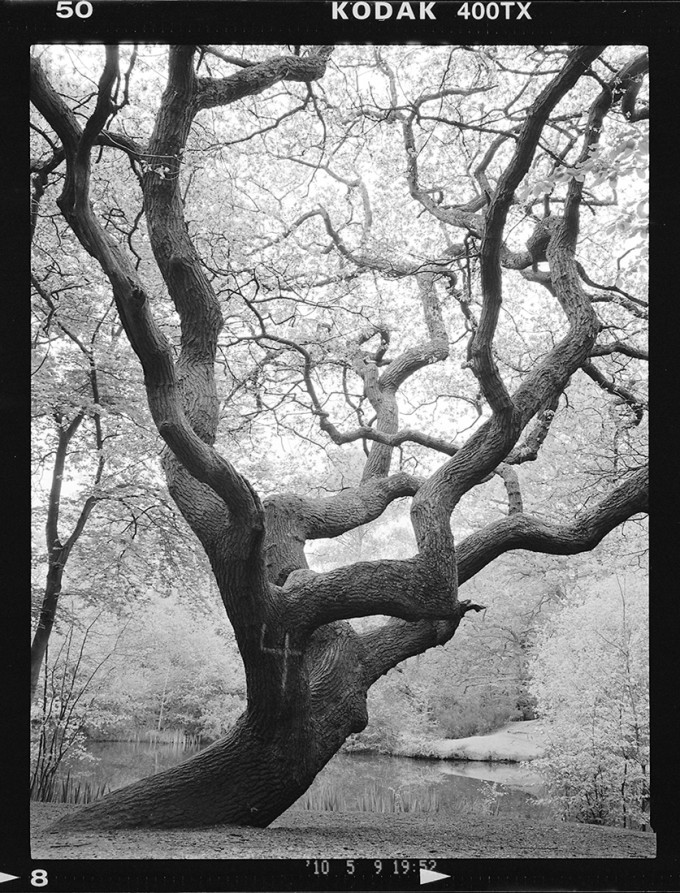
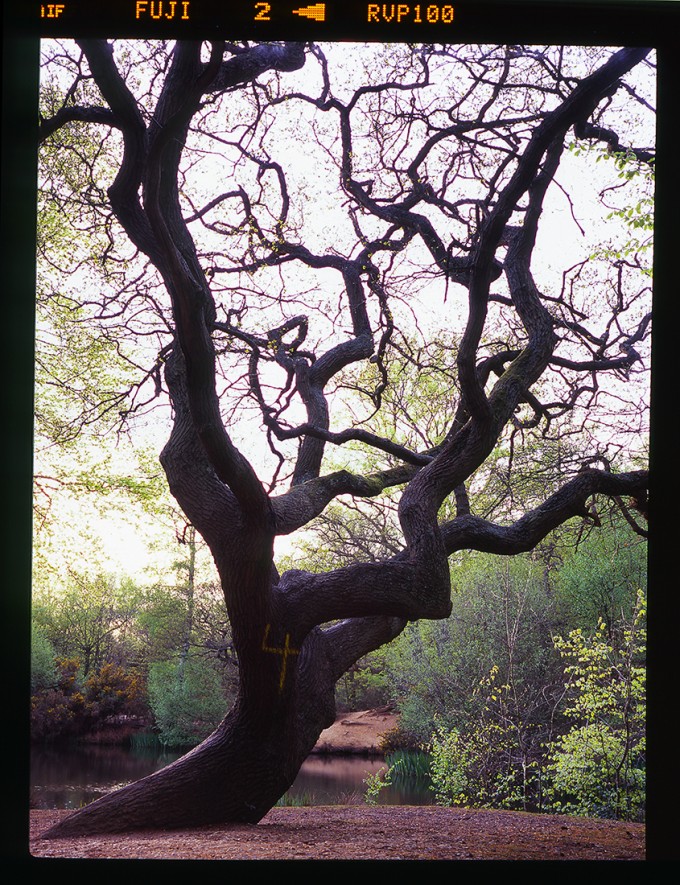
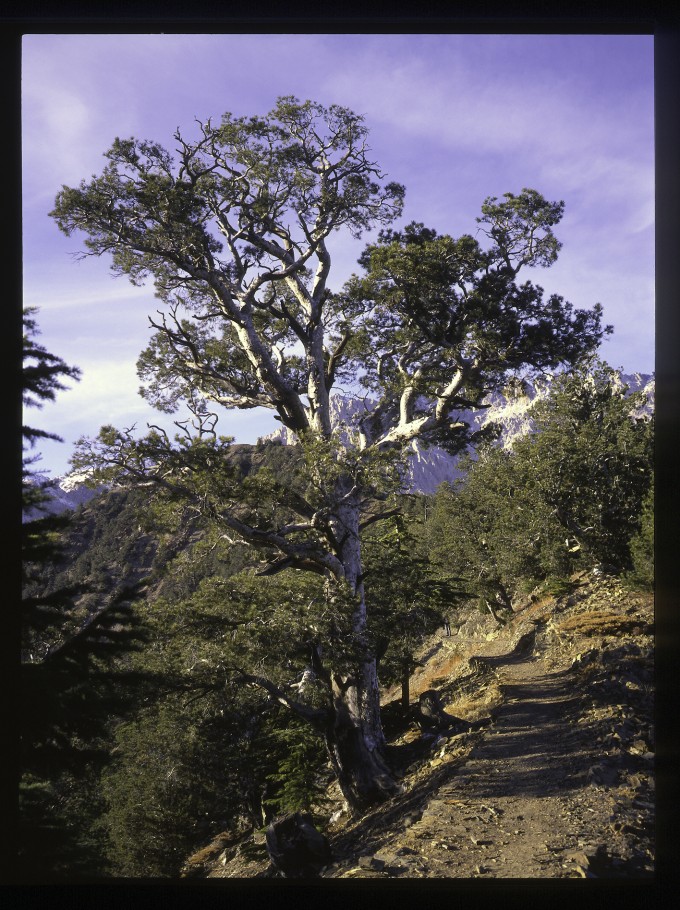
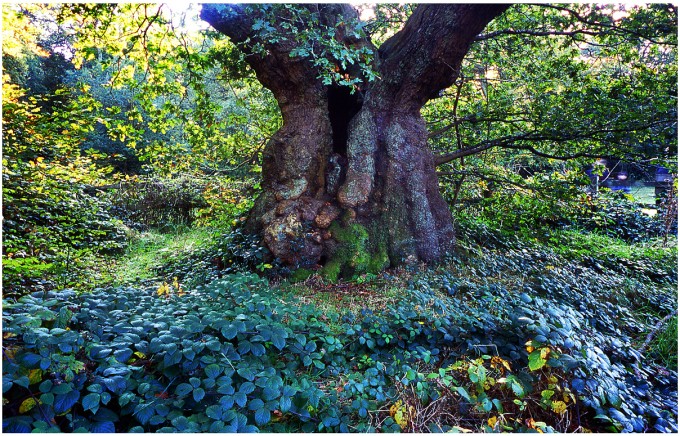

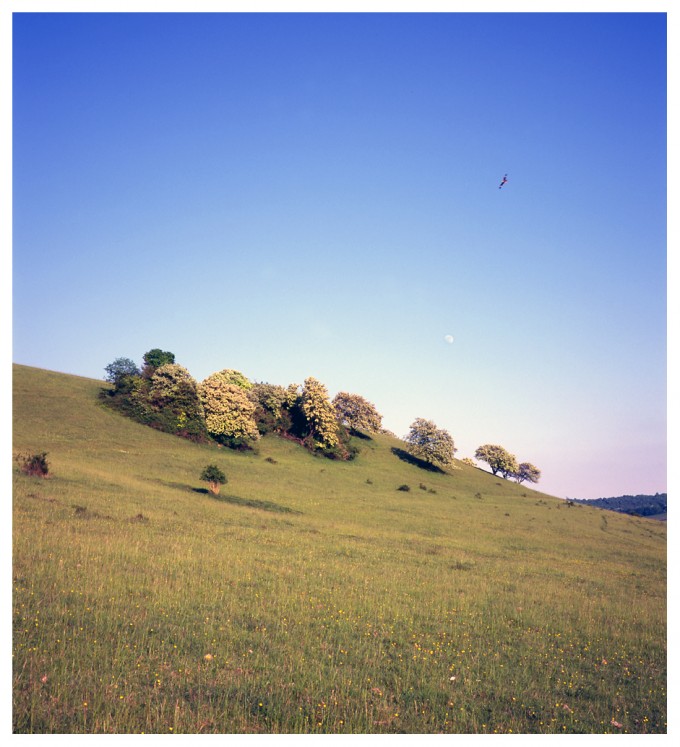
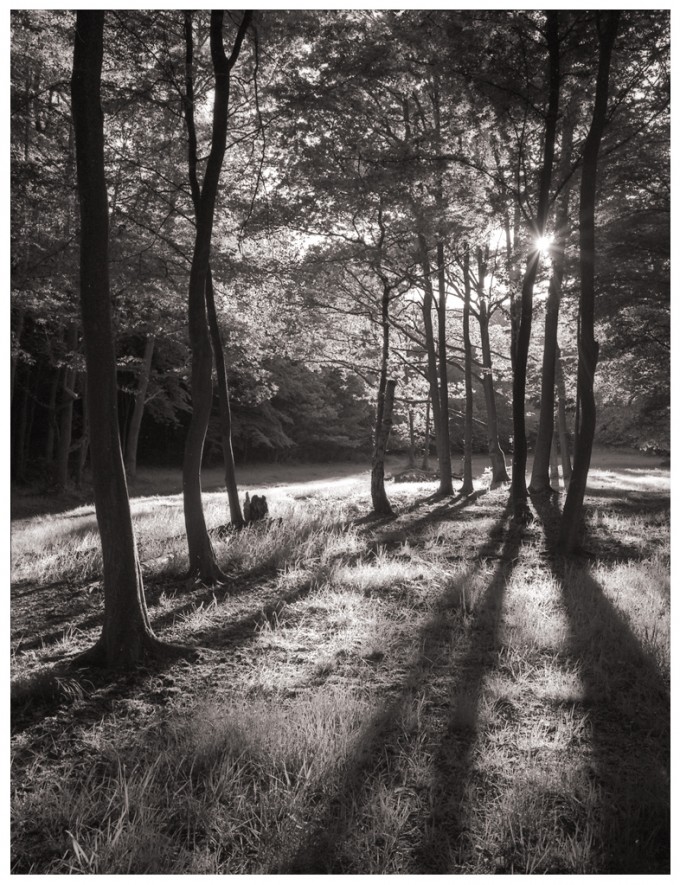
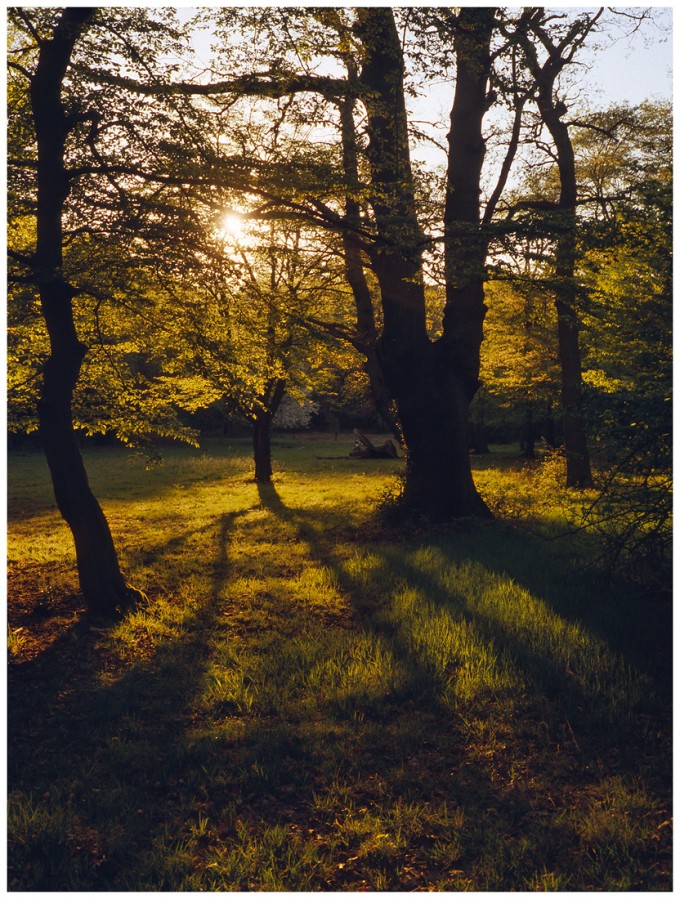
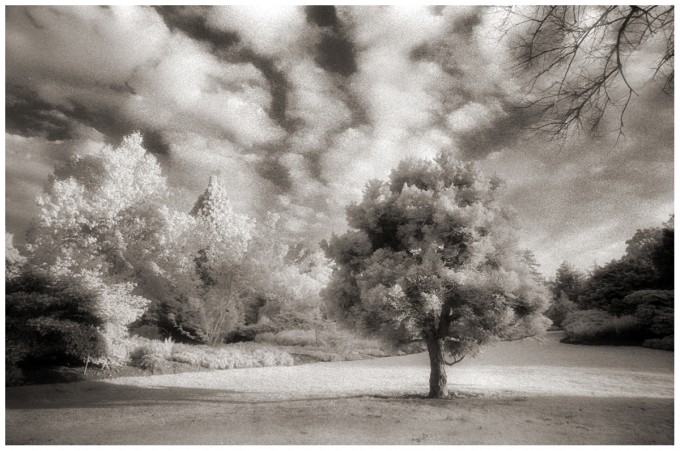
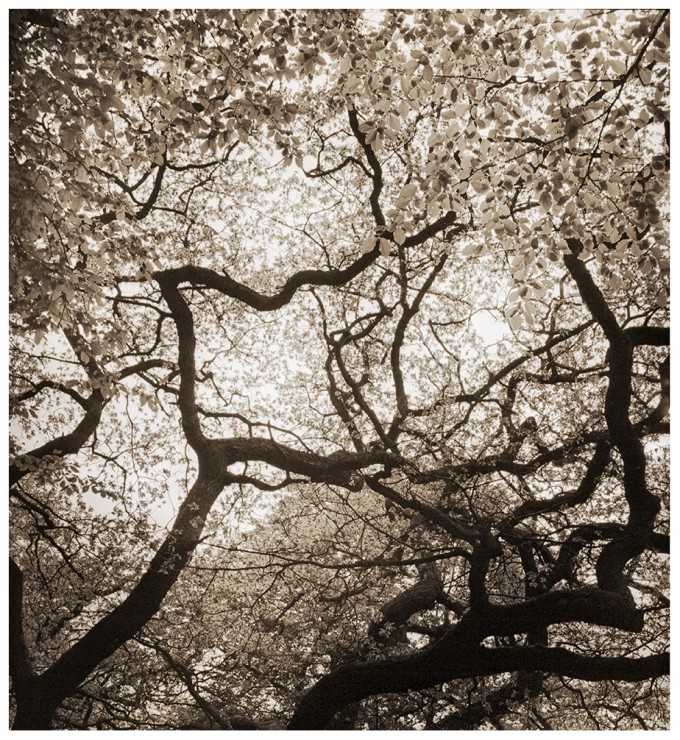


Hey i scanned all this pictures with a good dias negative scanner i found it on this very nice http://fotoscanner-test.net/ web
nice Ibraar, thanks for sharing.
Clearly black and white pics make a difference. Check out http://www.fotoscanner-test.com for comparing scanners for dias and negatives
Thanks guys, for those who may be interested;
http://www.onlandscape.co.uk/2011/05/composition-photographing-trees/
brilliant online magazine, film and digital!
Makes me wanna hug! 😉
Ibaar.
that is a steep learning curve. 0 to 60 in a day? apologies for the late reply. I ebay’d, amazon’d and wikipedia’d the heck out of your response.
I’ll be in touch. but as you publicised your email I assume your inbox in flooded already.
A pint it will be. And potentially the middle eastern phoot exhibition VA will show soon. _Markus
Infrared + trees = Win
Placed my order for the book. Thanks
Thank you for the book recommendations. You gave me inspiration to go out for a photo walk before the heat wave hits.
Nice shots! My college photography professor was always emphasizing the allure of the “organic line.” I think that you captured that allure very nicely in your shots.
Words of wisdom here.
No question of comparing to each other. Everyone has its own style and beauty is subjective anyways.
It’s not about you but it’s soooooo boring to read the same ol’ comments everytime someone posts his photos here…
People don’t know the meaning of the words they use.
I’m sure these guys scream “Awesome !!!” or “Amazing !!!” whenever they see an ant on the floor…
What would they say if the they were in Jordan, facing the city of Petra or in the valley of Sekota in Ethiopia ???
Instead, just show a photo of an average cat shot with a Noct and will hear “Gorgeous !!!” “Unbelievable”… Why travel the world then…
Up until now I thought trees were kinda boring. Thank you for this series, it’s really great!
Dear Ibraar
Have a close look at this webside:
http://www.filmscanner.info/en/Filmscanner.html
These are indeed beautiful images! I just the other day was talking about how I want to get into tree photography, which always seemed difficult to me even though I love trees. I also want to learn/practice some in black and white.
These photos and your comments are great inspiration.
cheers rex
Daan, I’m utterly useless at scanning.
Any advice?
Is silverfast worth investing in?
I have the Epson 4990 – do I need profiles etc? And if so, what are these ‘profiles’ all about?
I’m also pretty useless at scanning C41, utterly! My Neg scans are fail!
The only thing I’m confident in is BW negative.
Markus, it’d be a pleasure, drop me an email ibraar@me.com
I’m in London too so if you fancy hooking up for a Pint and a chat, then it’d be great.
I have the G2 and the SL66’s cousin the 6008i.
Zones are very important! And I’ll list a few books you can get the information in easy laymans terms below.
I recommend developing yourself, and scanning too. Developing is easy, scanning – well, relatively easy but for BW you’ll need to do some digital darkroom work.
If you want to improve your BW work, I learnt from a few books by John Garrett – The first one is basic but brilliant and really taught me all I know – since reading that one I read two of his more advanced ones, and have been since started printing my own photographs.
go to amazon and type John Garrett and read his “the Art of Black and White Photography”.
It is brilliant! Basic but so well explained.
He talks Film, developing, developers, printing, tones, zones, and themes and demonstrates everything brilliantly.
You can then try his Black and White Photography masterclass, and his Mastering Black and White Photography.
I also recommend buying and looking at Don McCullins books, he is BW photographer par excellence!
Combining John Garretts books with a good look at the shadow, light and tone in Don McCullins photographs will give you a great approach.
Try Open Skies by Don McCullin, Don McCullin by Don McCullin and In England by Don McCullin.
You’ll then be more confident to use digital darkroom techniques to dodge, burn in and contrast – or you can do it traditionally (there are a few public darkrooms I know of)
And do try some slides, if your camera has a decent light meter you’ll have no problems. The G2 light meter is great.
And get yourself a kaiser light table from amazon, and a loupe – your slides will come alive!
Al you made me giggle with that post man! Cheers!
Thanks for the encouraging comments regarding the BW work.
I use a Yellow filter on the lens all the time (unless wishing or requiring the use of a Red)
If you want to improve your BW work, I learnt from a few books by John Garrett – The first one is basic but brilliant and really taught me all I know – since reading that one http://www.amazon.co.uk/The-Art-Black-White-Photography/dp/1857329562/ref=sr_1_8?ie=UTF8&qid=1340756336&sr=8-8 I read two of his more advanced ones, and have been since started printing my own photographs.
the others are
http://www.amazon.co.uk/Garretts-Black-White-Photography-Masterclass/dp/0817440445/ref=ntt_at_ep_dpt_5
and
http://www.amazon.co.uk/Mastering-Black-White-Photography-Professional/dp/1845330692/ref=sr_1_21?s=books&ie=UTF8&qid=1340756483&sr=1-21
trust me, have a read!
I absolutely adore my one, and it’s a great travel camera as it’s light and relatively compact
Interesting thoughts man. thanks
Kais, thanks for the credit mate.
You’re quite right in many ways, and I don’t think any of my photographs are ‘awesome’ or anything as I don’t think I’m quite at the standard of many others here.
I am however proud of my B&W, as I do try hard to get things as right as I possibly can.
Cheers man, true say about loving the subject!
thanks aitor!
Beautiful images!
Saw this while i was at work, grabbed my camera and went out to take photos of trees as soon as i came home. Very inspiring, thank you!
Wow, these are gorgeous! Thank you.
It also helps to have film and that lovely Fuji GA645. 😉 The shots are beautiful. I love my GA645 too.
Incorrect use of apostrophes is one of the symptoms of Mountain Fairy possession. Don’t worry, it’s not fatal. Watching a reply of the 2011 Pakistan/Australia Twenty20 World Cup match will bring some relief. Mountain Fairies are Cricket fanatics, and will be busy rehashing every aspect of the match and will forget about you for a day or two.
BTW, your black and white photos are what I hope someday I can produce. I really like the tones in the first image and the first Epping forest image. I use an orange filter in PP conversion to come close to what you do.
Once again, some adjectives are missing here : stunning, amazing, never seen before, dreamy, perfect, breathtaking… Should I go on ?
It seems that some people here get too much moved by photos… Or don’t know the meaning of the words they use… Easy guys, easy, don’t lose your temper or you could have a heart attack if you look at Brassai’s or Crewdson’s photos…
Anyway, I have to give credit where credit is due : it’s very hard to make something still look beautiful, it can’t more true with trees…
BW is tone and tone is basic. Marc Chagall once said that “color is love.” BW has a unique quality but color has an extra dimention BW will never have. Color is impossible control or change unless you are in a studio or you do it through PP which defeats the purpose. ansel Adams was never as successful in color as he was in BW because even he saw the limits of photography. You cannot change the color of what you have before you unless you are in a studio. When you take away color, you take away another element which you have to control or master. When you take something away, you will have a different product for sure, but you will inherently also have a limited product with limitations. Note how BW photos have a timeless feel about them but also how every single BW photo feels old and dated.That’s cause they are missing the most important ingredient of life…COLOR!
We see color, we live with it everyday.Color can almost make you smell the subject, can almost make you feel the heat or cold, color is an extra tool that without, will limit anyones expression. A picture that works on the principle of tone is a whole lot easier than color. That is why Bresson said that photography is just an instant drawing. And that is what BW photgraphy is..an instant pencil drawing done by the camera. Painters use color but molst of them actually work in tone like BW, very few painters like Bonnard for example can actually master color, not tone.
There’s nothing wrong with some purple fringing, it brings more color into the tree trunks and branches.
fantastic set
Vuescan is only good in batch processing when you have a dedicated 35mm film scanner!
With my Epson V700 i used Silverfast as it gives me easier control then i could get with the Epson software. Too bad you need to buy the software for every scanner and i do have a Nikon Coolscan 8000 also. And now with MacOSX 10.7 you need to buy the new version of Silverfast, where Vuescan gives you free updates with the Pro version!
But i think even for the web you need to make the best scan you can!
When people see your exhibition and tell their friends about it and they look at your website and see not top art scans, they won’t tell their friends about you in a positive manner(about the photos that is)
Ibraar,
would you kindly share more hints and tips? I’m London based and switching from digital to film as I got my hands on a G2 and SL66 recently.
I’d be very interested in your thoughts on my approach.
Before I move to slide film I’ll try negative first understanding slides are less tolerant to exposure not spot on. Do I need to worry or do I need to live and breath Ansel’s zones first?
I’m considering having every film developed and scanned (medium quality) by a lab – palmlabs in Birmingham perhaps? Any recommendation/thought?
regards. M
Proof that to take pictures that are really special you must love your subject matter in order to fully see it – and so capture it.
Grande!
I like a lot first and Turville´s pictures. But in the first one you really captured the magnificence of this tree!
Thanks Jason. I’d love to see yours (or someone else’s) tree photo’s.
Thanks Mik, I agree, (in my case any way) B&W makes for a more characteristic and graphic picture.
cheers man, it’s not purple fringing though, its the scanning, too much Magenta. Need to weak that picture.
😀 hehe!! I stand corrected!
I’m very impressed with your B&W work. Not so much with the color, though. That first color shot seems to have some serious purple fringing issues happening in the branches.
Trees have character. I have often stopped my finger on the shutter release thinking that the subject of trees has been used up. But looking at these, perhaps not.
The light in the first tri-x shot is very pleasing. Definately b&w makes stronger tree-shots.
Sorry man, I use an Epson 4990 flatbed with Epson software.
The Epson 4990/V700/V750 are similar (the V’s being better) and do the job!
but truth be told they are no match for a dedicated Film scanner – but these are very expensive.
I just scan depending on what I want the image for – if I need a lot of Quality I’ll use Vuescan, if I just want to scan for the web and want to scan lots I use Epson Scan software.
I then tweak (to match original slide as close as I can) and sharpen/resize in Photoshop.
Dear Ibraar
Please let us know your tips and tricks 🙂 to get from analog film a good digital image.
Tks.
Awesome shots, though I never felt trees are overlooked haha. Maybe because I’ve taken extra notice of trees, each tree is unique, the shape and size are very expressive and almost tell a story of their life. Trees that grow in harsh environments usually provide a lot of character.
Thanks man, it’s worth getting a 6×4.5 Fuji GA645 as it’s so small and compact, and very light!
Another option would be the Bronica RF645.
I am shooting 6×6 these days, on a Rolleiflex 6008i, I really love the square format.
Thanks Robert, Robert! I will do indeed!
I tend to visit the Chilterns when I can, and , Ibstone and Turville and especially on Cobblestone Hill are my favourite spots, with the view from Cobblestone Hill towards Turville being one of my favourite spots in the world – comparable to any Karakoram peak or valley.
If you check my ‘summer is almost upon us’ article here you may see a scene or two you’ll recognise! 🙂
Thanks David, had a nice look at Rodney Graham’s work, man, the whole concept and style is mesmerising!
Thanks man. The first Epping photo is my favourite. I have that one printed on warmtone FB paper.
Thanks ever so much David!
I too like the B&W’s, you’re quite right!
Thanks Mike!
James, your post isn’t correct.
The Hindu Kush region in Pakistan, ie. Chitral region is the SAFEST region in Pakistan, and many western tourists go there. It is a gorgeous trekking destination and there have been NO attacks on foreigners or any local in that region in many years (the only problem was a Greek guy was kidnapped some years back, and then released).
The British FCO state as much too.
The only danger around there is the likelihood of twisting an ankle on a trek, falling of a cliff or becoming possessed by the Mountain Fairies (if you believe in them)
Check out my other posts on Steve Huff about them;
James, your post isn’t correct.
The Hindu Kush region in Pakistan, ie. Chitral region is the SAFEST region in Pakistan, and many western tourists go there. It is a gorgeous trekking destination and there have been NO attacks on foreigners or any local in that region in many years (the only problem was a Greek guy was kidnapped some years back, and then released).
The British FCO state as much too.
The only danger around there is the likelihood of twisting an ankle on a trek, falling of a cliff or becoming possessed by the Mountain Fairies (if you believe in them)
Check out my other posts on Steve Huff about them;
http://www.stevehuffphoto.com/2012/02/21/the-contax-g2-travel-companion-by-ibraar-hussain/
http://www.stevehuffphoto.com/2012/03/05/the-olympus-xz-1-constant-travel-companion-by-ibraar-hussain/
http://www.stevehuffphoto.com/2012/02/26/a-short-walk-in-the-hindu-kush-with-a-fuji-645-by-ibraar-hussain/
Hello Ibraar
Just stunned from your breathtaking pictures. I like tree shots as well. The more I look them over I started rethinking whether to get myself a 6×4.5 film camera again. The pictures from the Fuji are so crisp and sharp. Simply astonishing. What kind of scanner you use?
Ibraar – superb post as usual. One small point – you are using the greengrocer’s apostrophe. “potato’s”.
Tree’s should be trees.
Too bad that such fabled scenery as can be found in the Hindu Kush mountains is now located in two failed states ,namely Afghanistan and Pakistan and that only a few lucky travellers like you can appreciate it’s beauty,in what is arguably one of the most dangerous regions in the world.
It’s always a good thing to start and with the best images and for me the first and the last are that!
For trees i think you need them in black and white and also in a way that they’re more graphic and don’t disappear in the background.
red kite over the chiltern hills…this is my hood! give me a shout next time you are in the hood nils.film@gmail.com
This is a beautiful set of photographs. I know that most photographers disagree with me but I think it is extremely difficult for photography to raise to the level of the finest painting. These photos here remind me of one photographer who has done just that; Rodney Graham. One of the qualities that painting has over photography is surface and it is a major reason why painting must be seen in the flesh rather than over the internet or in books. Many years ago, I went to the Dia Foundation is New York City and stumbled upon these tree photographs by Rodney Graham. Each photo was 5′ – 6′ tall. It might seem tricky to rely on scale and to turn the photos upside down for effect but, in the flesh, these photos were mesmerizing and convincing. Reproductions do not do justice to these photos. http://www.google.com/search?q=Rodney+Graham+tree+photos&hl=en&client=safari&rls=en&prmd=imvnso&source=lnms&tbm=isch&sa=X&ei=FJzoT9-QCM6K6QGJqKHgDg&ved=0CDsQ_AUoAQ&biw=1280&bih=686
The photo of the druid oak, and the first photo in Epping forest are my favorites here!! Superb work overall =)
The black-&-white ones, instead of being straight “captures”, are “interpretations”, and they concentrate on the light and shade, and the ideas of distance and shape, with no distracting colours. I really like those – I like them the best!
Gorgeous shots!!!!! I gotta find me some trees to shoot.